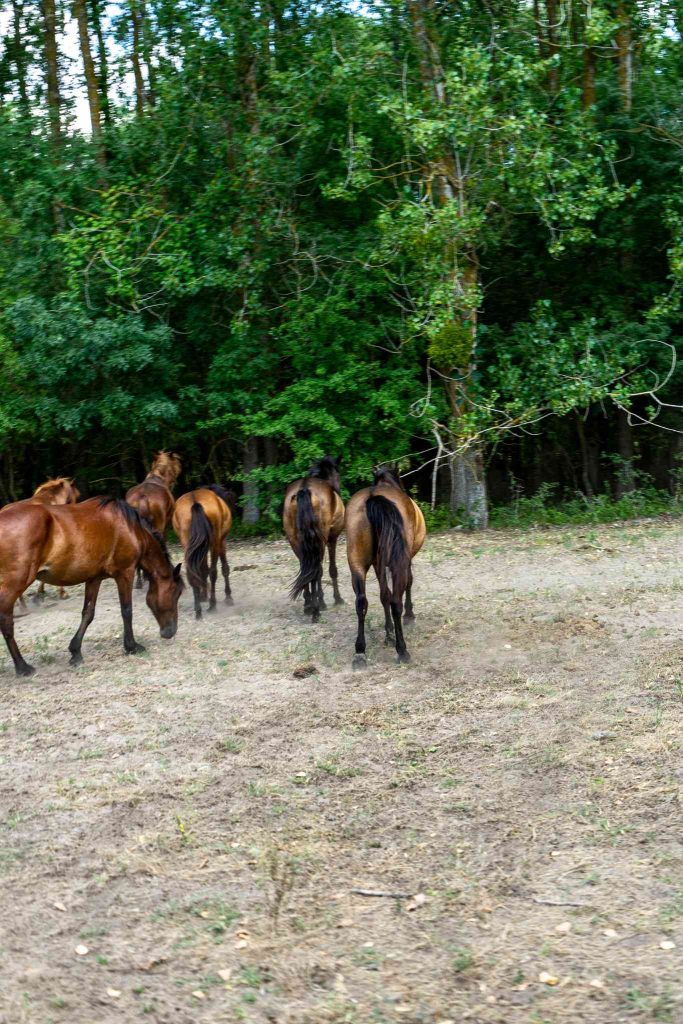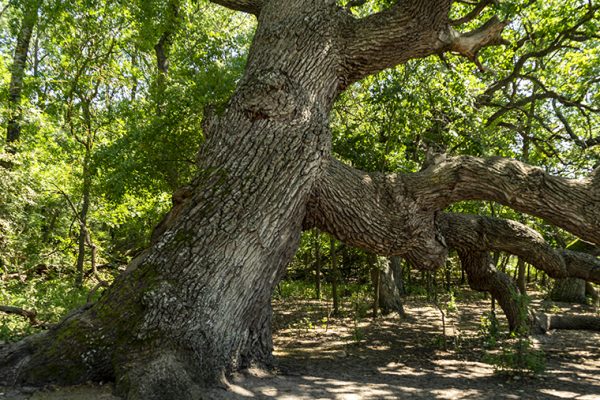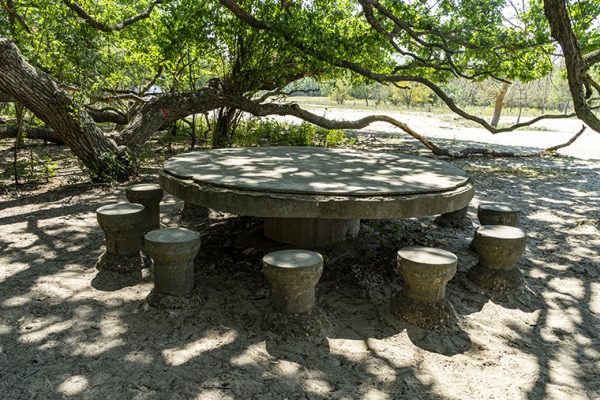Caraorman Forest and the Bowed Oak
Caraorman Forest
Caraorman Forest, also known as the Dark Forest or Black Forest (from the Turkish translation of “kara orman”), is a strict natural reserve, declared an area of national interest since 2000. Caraorman Forest covers an area of 2250 hectares in the central-northern part of the Delta, on the northern territory of the village of Caraorman, in Crișan commune, Tulcea County. The natural reserve of Caraorman Forest is included in the UNESCO World Heritage as a biosphere reserve, part of the Danube Delta National Park.

Natural Reserve in the Danube Delta
Caraorman Forest occupies the southern part of the Caraorman sandbank. The central area of the sandbank is characterized by marine-origin sand dunes, devoid of vegetation and desert-like, which can reach heights of 7-9 meters due to wind mobility. These are protected as the most extensive fine sand dunes in Romania, surprisingly populated by jackals. The Caraorman sandbank is located in the heart of the Danube Delta and, along with the Letea sandbank, forms part of the initial sand cord that blocked the Tulcea gulf 8000 years ago, initially transforming it into a lagoon and later into the Danube Delta.
Access to Caraorman Forest is from the village – and although the route can be walked, it is advisable to use the services of a local to accompany you by car or tractor with a trailer. Declared a natural monument in 1940, Caraorman Forest is a forest of tall oaks over 30 m high, mixed with ash trees, poplars, shrubs, reed thickets, and reeds, herbaceous species, climbing vegetation of vines and clinging plants such as ivy, hops, wild grapevine, and woodbine.
Under this subtropical aspect, the lush Caraorman Forest shelters the wild horses of the Delta, as well as the white-tailed eagles (Haliaeetus albicilla), one of the largest birds of prey in the Danube Delta, a legally protected species. Famous for its moving dunes and ancient oaks, the Caraorman Forest Reserve also captivates tourists with the hosting of the common raven (Corvus corax) and the black woodpecker (Dryocopus martius), the otter (Lutra lutra), or the wild hare (Lepus capensis).
Knelt Oak in Caraorman Forest
Essentially, the legend of the Knelt Oak tells a centuries-old love story between the beautiful daughter of a Romanian settled in Crișan and a Cossack warrior, renowned for his bravery. Their families lived in harmony, but their wedding preparations were under the threat of revenge from a Turk, whom—before giving her heart to the brave Cossack—the Romanian’s daughter had refused a marriage proposal. Thus, seizing the right moment, the Turk and a few of his fellows managed to kidnap the bride-to-be and hide in the Black Forest. With help, the brave Cossack traced the robbers and launched a fight to the death to rescue his bride. Kneeling and begging for mercy, the Turks were slain to the last man. A fairytale wedding followed, and shortly after, on the site of the bloodshed, sprouted the shoot of an unusual oak—the Knelt Oak.
Near the Knelt Oak is the site known as the Hunters’ Fountain, which represents a reproduction (in concrete and mosaic) of Constantin Brâncuși’s sculpture Table of Silence.

The Knelt Oak
The Knelt Oak in Caraorman Forest is a famous specimen of the Quercus robur species, reaching an astonishing age of over 400 years and a circumference of 4 meters. It is the largest oak in the Danube Delta, named for its branches that stretch down to the sand, around which several local legends have been formed.
If you choose to make a sensory journey to the Knelt Oak in Caraorman Forest, it will be initiated by the experience of the village of Caraorman. An authentic place in the heart of the Delta and one of the few villages that has preserved its old-time charm. You will be greeted by the hospitality of the locals and the traditional fishery cuisine, characteristic of the Ukrainians in the village.


